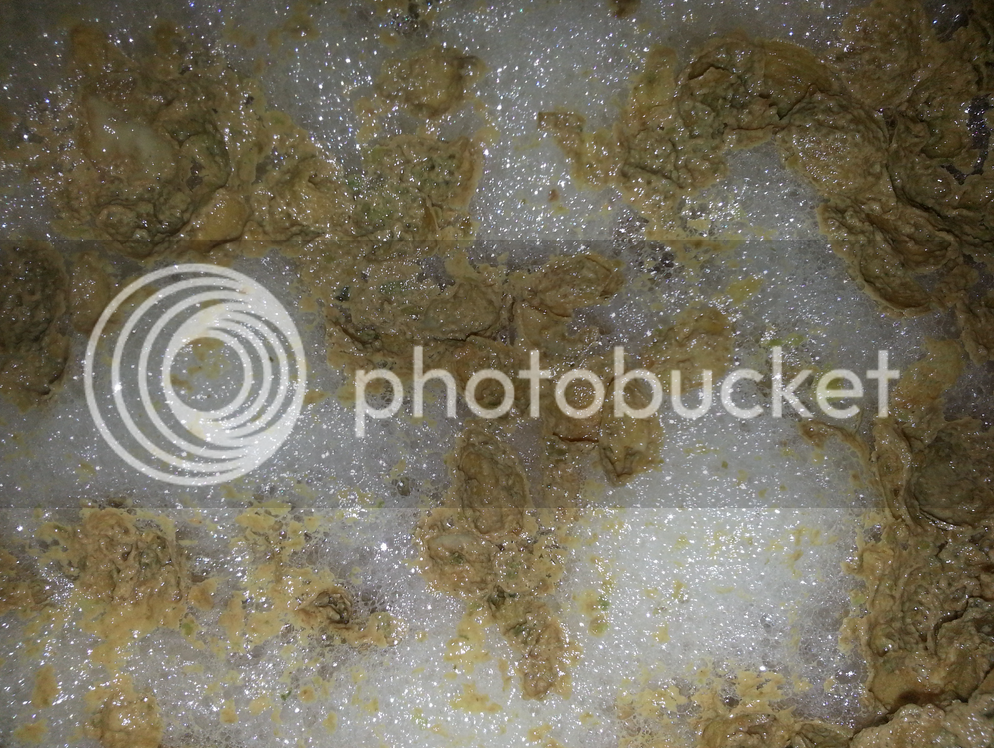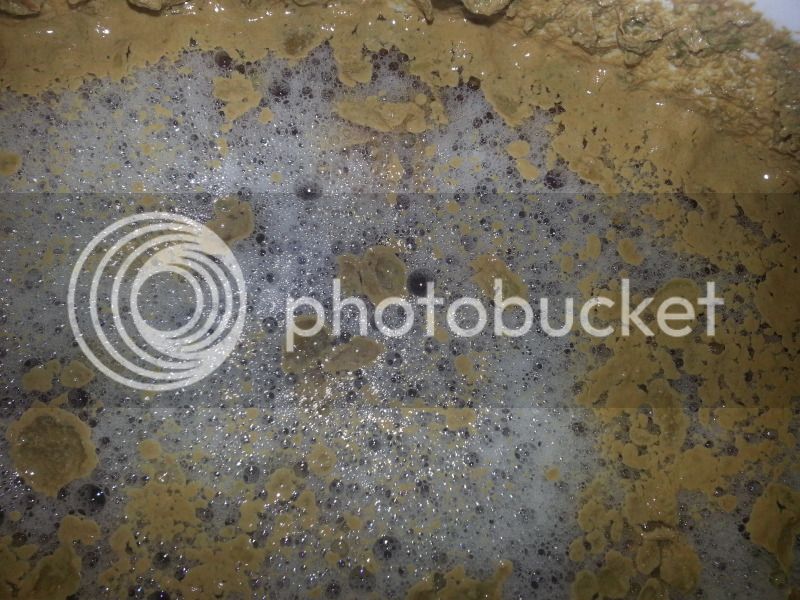This is just a peak down the airhole in my plastic fermentor. Does everything look okay? I'm only getting a bubble about every 18 seconds or so from the lock.
There's some whole leaf hops from the 5 minute biol i left in there. Will definitely not make their way into the secondary.
The aroma off this pot has been, I hate to say it, but somewhat putrid. Just SOMEWHAT, though. And I think the main turn off has been maybe an excessive presence of CO2 gas.
The brew was a Ginger Pale Ale by mini-mash
2# grains (I don't know what exactly)
.5# specialty grain (don't know either)
5# xP LME
1 oz. NB @ 60
.75oz Cluster @ 15
.75oz dried Ginger @ 10
.75oz Cluster @ 5 (I substituted some whole Simcoe I had at this point : can't et enough of that unique, piney aroma). I left some of that whole leaf in the P1 that I'll filter out into the P2 come this week some time...
EDIT: threw in 1 peel of grapefruit with ~3minutes left in the biol. Skooped dem out after the wort tmp had cooled.
Here's the pics (from Tuesday-24hrs post brew) bubbles every 2 to 3 seconds

Tonight, bubbles 15-18 seconds apart

I'm seeing SOME improvement from my previous batches, but damn it, how can I achieve a solid 5 to 10 day F1? more yeast? different temps? This batch here is my third batch and has been maintained ambient temps from 66-69*F with bucket temps at 70-72. With one White Labs California Ale WLP-001 (right in the Attentuation range of 66-70)
My current plan is to let it ride until Wednesday (9-days in P1) or so then rack it to P2 and hopefully find a respectable FG. Then sit on it in a P2 for 3 weeks and bottle her up.
I don't know what else to do.
HELP!
There's some whole leaf hops from the 5 minute biol i left in there. Will definitely not make their way into the secondary.
The aroma off this pot has been, I hate to say it, but somewhat putrid. Just SOMEWHAT, though. And I think the main turn off has been maybe an excessive presence of CO2 gas.
The brew was a Ginger Pale Ale by mini-mash
2# grains (I don't know what exactly)
.5# specialty grain (don't know either)
5# xP LME
1 oz. NB @ 60
.75oz Cluster @ 15
.75oz dried Ginger @ 10
.75oz Cluster @ 5 (I substituted some whole Simcoe I had at this point : can't et enough of that unique, piney aroma). I left some of that whole leaf in the P1 that I'll filter out into the P2 come this week some time...
EDIT: threw in 1 peel of grapefruit with ~3minutes left in the biol. Skooped dem out after the wort tmp had cooled.
Here's the pics (from Tuesday-24hrs post brew) bubbles every 2 to 3 seconds

Tonight, bubbles 15-18 seconds apart

I'm seeing SOME improvement from my previous batches, but damn it, how can I achieve a solid 5 to 10 day F1? more yeast? different temps? This batch here is my third batch and has been maintained ambient temps from 66-69*F with bucket temps at 70-72. With one White Labs California Ale WLP-001 (right in the Attentuation range of 66-70)
My current plan is to let it ride until Wednesday (9-days in P1) or so then rack it to P2 and hopefully find a respectable FG. Then sit on it in a P2 for 3 weeks and bottle her up.
I don't know what else to do.
HELP!


